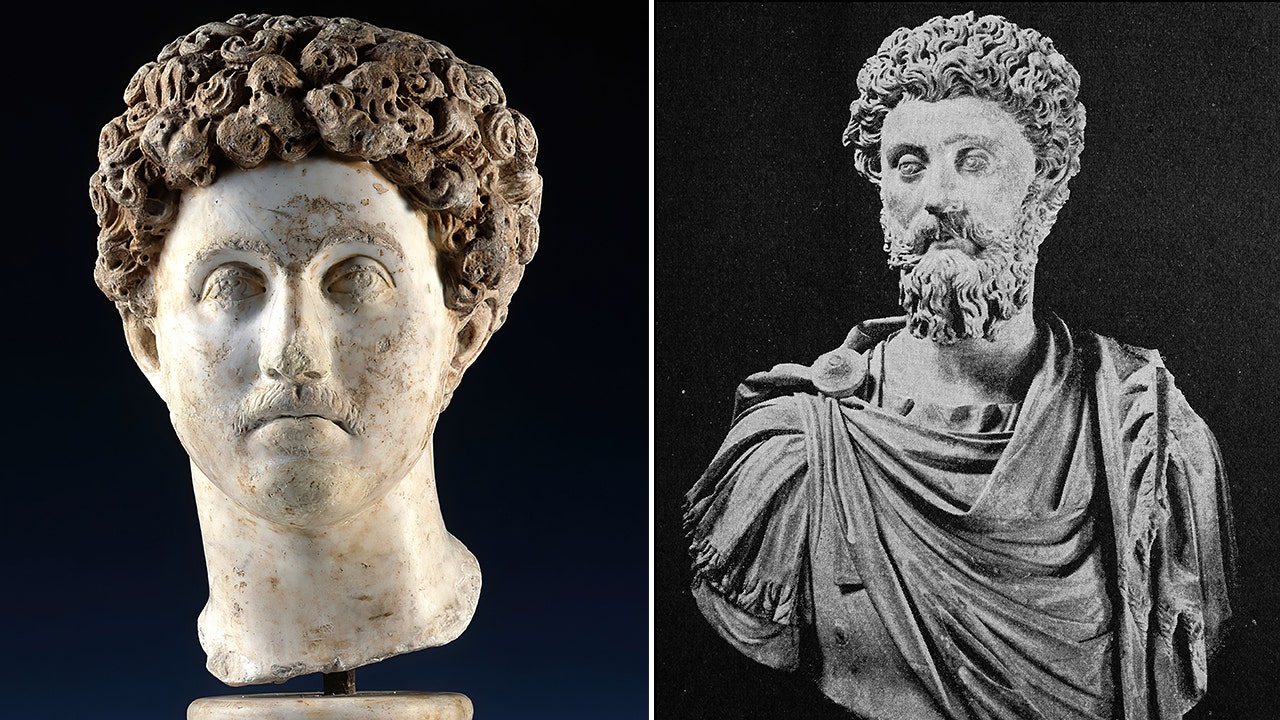Lublin Provincial Conservator of Monuments, an organization dedicated to the protection of ancient artifacts in Poland, revealed the discovery of various treasures, including silver coins, and among them was an Ancient Roman counterfeit cache.
An organization referred to as the “Group of Explorers” stumbled upon coins, fibules, knives and various types of tools using metal detectors.
The individuals explored the grounds of Księżpol, a village in Poland, and unearthed denars, or coins, minted between the years 138-251.
The Lublin Provincial Conservator of Monuments posted to social media to exhibit the findings. The account responded to one user who inquired about the coins’ monetary value.
Coins with the faces of former Roman Emperor’s Antonius Pius and Marcus Aurelius were found among the ancient artifacts unearthed in Poland. (Sepia Times/Contributor | Bildagentur-online/Universal Images Group via Getty Images)
“Priceless,” Lublin’s account said.
“Coins – especially Roman ones, and the fact that such a large number of these relics were found in one place – are an exceptional rarity,” another comment from Lublin read. “Archaeologists from Zamość claim that this is a sensational and exceptional find. One can initially assume, but this requires further verification – that it may have been connected with a trade route. Because the coins are Roman, medieval and modern.”
Photographs of Roman silver coins stamped with the face of Antonius Pius, a former Roman Emperor, minted in the years 138-161, were among the discovered. An in-tact silver coin with the face of Pius’ wife, Faustina the Younger, was also acquired.
Among the photographs of each find was a silver coin, which was determined to have been minted in the year 174, that featured the face of the Roman Emperor and philosopher, Marcus Aurelius.
THOUSANDS OF ANCIENT COINS FOUND IN SEA GRASS OFF THE COAST OF SARDINIA

A coin with Faustina the Younger’s face minted on it was among the ancient artifacts found. (AFP via Getty Images)
Several coins identified as counterfeits were also among the discoveries. An illegible silver coin, believed to have been made by Goths from Wielbaric culture, and a counterfeit Pius coin made by the Goths from a camel culture, were presented on Lublin’s social media post.
Rugged fragments of coins were also found among the fields. A piece of a Pius coin minted in 146-152 is presumed by experts to have been intentionally cut during trade exchange.
The fragment of a rare coin glossed with the face of Etruscan Herenia, wife of Roman Emperor Trajan Decjiusz, was found among the discoveries. Only a quarter of the piece was present at the time of discovery, and it is expected that the coin was cut during trade.
Elsewhere, silicon tools, pottery and ceramics found in the same area and are estimated to be from the Early Middle Ages, the Old Polish period and the Modern Period, were analyzed by archeology experts.

The artifacts found were immediately brought to the University of Lublin. (Artur Widak/NurPhoto via Getty Images)
CLICK HERE TO GET THE FOX NEWS APP
The “Group of Explorers” is led by Janusz Szabat and Piotr Magoch and often seeks the unearthing of ancient artifacts and relics.
Notably, the metal detectorists immediately provided the ancient finds to the University of Lublin and transfer to the Museum in Belgrade is expected in the future.





